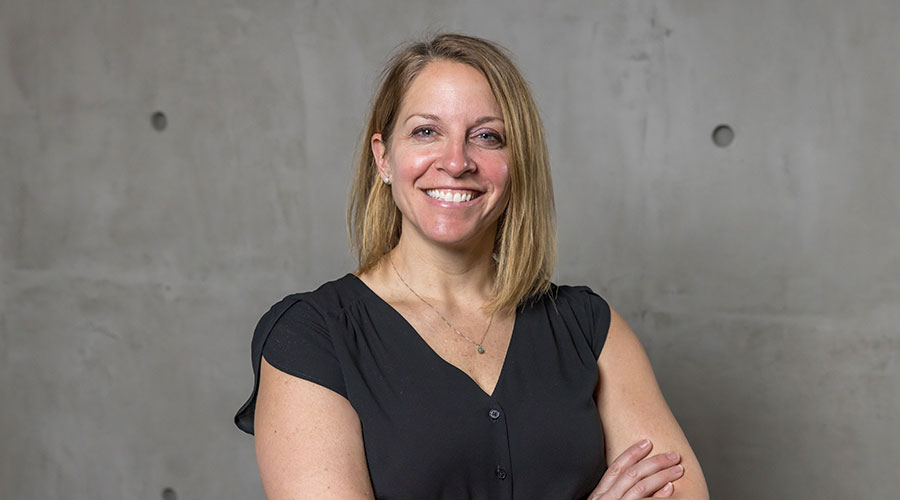New Generation of Schools
A wave of school building programs is washing away old ideas about educational facilities
Over the past decade, school districts across the nation have been confronted with the problem of inadequate building inventories: aging facilities, a lack of technology infrastructure, inflexible buildings, outdated systems and overcrowded classrooms. Booming enrollments, technological advances, new instructional approaches and long-deferred maintenance contributed to the challenge, and blistering assessments, such as the GAO’s landmark report, “School Facilities: America’s Schools Not Designed or Equipped for 21st Century,” confirmed the severity of the situation.
As a result, comprehensive modernization programs are now under way throughout the United States, representing billions of dollars in new construction and renovation projects. Lima City Schools in Ohio, for example, is replacing nearly all of the district’s school buildings over a six-year period, in an ambitious, state-assisted $104-million construction program. The District of Columbia Public Schools, faced with an inventory of approximately 150 buildings that average 65 years in age, is similarly embarking upon a massive modernization program, estimated to total nearly $2 billion.
Whether urban, suburban or rural, the nation’s school districts have made capital improvements a top priority, with more than $56 billion spent on facilities from 1998 through 2000. With estimates for school modernization needs now topping $300 billion nationwide, this pace should continue for several years.
In this new generation of educational facilities, school districts — working in partnership with architects, planners, contractors, educators and community members — have examined creative approaches to enhance learning through effective building design, while addressing such issues as security, technology, energy efficiency, environmental and health concerns, flexibility and community use. The planning process for schools has evolved as well: Intensive planning sessions, forums for community engagement, and design charrettes are resulting in schools that are more thoughtfully conceived and better suited to the needs of each community.
Safety and Security
Although security has clearly emerged as a primary concern in school facilities today, districts vary widely in the application of security measures. Some districts, especially in urban areas, have installed visible security devices such as X-ray systems, metal detectors, surveillance cameras and closed circuit television monitors. Other districts have held back, concerned about the risk of creating an overly restrictive atmosphere.
A number of design measures significantly enhance security without sacrificing an open and inviting environment. Many new schools are incorporating secure outdoor play areas, courtyards and plazas, enabling students to go outside to eat, socialize and study in an easily supervised setting. Public access to school buildings can be carefully monitored by positioning administrative suites at the main entry of the building and securing other entry points.
Designing schools that are smaller — certainly a philosophy now advocated by many educators nationally — also helps reduce security problems. Although construction and administrative costs, as well as political influences, often prevent communities from building smaller facilities, they may opt to accommodate a larger school population through a “schools-within-a-school” concept, with separate, smaller academic houses and neighborhoods — each with decentralized administration, guidance, faculty and support functions.
Especially in larger facilities at the secondary level, districts today often sponsor more direct and aggressive measures to enhance security. Chesterton High School in Chesterton, Ind., is monitored by 125 surveillance cameras, with a security center located within the administrative suite. All classrooms have telephones, and staff members carry coded key-fob transmitters that can relay an alarm to the security office.
Highland High School, a 1,000-student project currently in design in Medina, Ohio, will include a secure entry vestibule at the main entrance that allows administrative staff the option to screen visitors before permitting access to the office — the “gatekeeper” into the rest of the building.
Advanced Technology
The technology initiative in schools over the past decade has moved forward at a brisk pace, yet many schools still lack the basic infrastructure. The GAO report documented cases in which computers sat in boxes because the buildings couldn’t support the technology.
The effort to modernize schools in order to integrate technology continues. Although school districts are still constructing computer labs, wireless technology, personal computers and video are now much more prevalent in the classroom, often requiring larger, more flexible spaces. The state-of-the-art equipment in computer labs has also advanced significantly, with spaces that now reflect the latest in audio-visual technology and accommodate a variety of activities, including traditional lecture-based instruction, multimedia production, technology presentations and other forward-thinking educational environments.
Like their corporate counterparts, school districts are now exploring flexible venues such as “cybercommons” and “cybercafes,” offering students options to gather informally, access data networks and the Internet, and work independently or in small groups. Despite the advent of digital media, media centers have held their own in size, and may even expand as schools seek to provide informal spaces for students and to support independent research programs and a variety of student-centered activities. A nationally recognized “Blue Ribbon” school, Upper St. Clair High School in Pennsylvania recently underwent a comprehensive modernization that included the development of a large resource center adjacent to the new media center where students can gather for independent reading or study, Internet access, team projects, faculty assistance, counseling and tutoring.
Appropriate furnishings are vital to classroom flexibility and the integration of technology, and like the technology itself, this aspect can be a constantly moving target. With the increased presence of less intrusive technology (laptop computers, flat screen monitors, wireless technology, etc.), desks, carrels and countertops may evolve into more streamlined products. Proper lighting, temperature control and the control of glare from windows are also important issues to address. Schools must also now include adequate space for computer repair, set-up and servicing.
Sustainable Design
One of the most compelling trends in school design today is the advent of sustainable or green design. The process starts with the site, addressing such issues as how the building is oriented, and continues through the design of building systems and specification of materials, such as non-toxic and recycled materials.
Architects today are carefully considering options for maximizing use of a school site while minimizing environmental impact. Deerfield Elementary School, an award-winning K-4 magnet school in Novi, Mich., is positioned on a heavily wooded site with a large wetland area. An amphitheater and outdoor learning plaza highlight the transition between the building’s interior and the outdoors, with a greenhouse and wooden bridges along planted areas welcoming students from the outdoors into the learning center. Here, acoustical ceiling tiles and murals, carpet graphics, signage, and a colorful diorama and domed ceiling representing the sky all celebrate the environmental theme.
Site issues also include such considerations as:
- Using native plantings, grasses and wildflowers rather than lawns that must be irrigated, mowed and chemically treated.
- Positioning parking areas away from windows to minimize reflective heat and noise that may impact the classroom environment.
- Orienting the building in such a way that solar heat gain is minimized while cross-ventilation capabilities are enhanced.
- Reclaiming rainwater for use in irrigating athletic fields.
- Using stormwater runoff to create pond areas, wetlands, outdoor learning labs and nature study areas.
- Locating a school within the center of a community or a downtown area to reduce vehicular transportation and expansive surface parking.
- Retrofitting existing community facilities or older school buildings, rather than building a new building on an undeveloped site.
The introduction of ample natural daylight into a school building is another important green concept, as recent studies suggest that exposure to natural light may have a significant impact on student performance. The inclusion of windows, interior courtyards, clerestory windows and skylights, as well as interior windows, can maximize natural light and may reduce the need for artificial lighting. In Crestview Middle School in Huntington, Ind., for example, all of the science labs are positioned centrally around the school’s media center. Clerestory windows in the labs bring in indirect natural light from the media center’s large skylight.
On the building exterior, shading devices such as roof overhangs and fins or louvers above windows reduce glare. High-performance glass with sun-reflective qualities also helps to preserve a well-lighted but comfortable environment. Many schools are incorporating flexible lighting systems to suit a variety of instructional needs and adjust to the levels of daylight.
Energy-efficient building systems are critical to a successful green project. Manheim Township School District in Pennsylvania has successfully used geothermal heat pumps for their buildings, and a number of schools, such as A.I. Root Middle School in Medina, Ohio, utilize ice storage systems for efficient and cost-effective cooling.
With increased awareness of children’s health concerns, such as asthma and allergies, VOC-free paints and adhesives are now being specified to eliminate the emission of noxious gases. While some districts have opted to eliminate carpet, fearing parental concerns about mold and fungus, most designers agree that well-maintained carpet is still a valid option. Carpet is also a plus for most teachers and students due to the acoustical benefits.
Other options for green specifications include wood products from suppliers with Forest Stewardship Council certification; recycled materials, such as plastic laminates and carpet; and locally manufactured products that reduce the use of fuel in shipping.
The Building as a Learning Tool
Designing a school so that the building itself can be effectively used as a learning tool is an intriguing option that has long been overlooked. As educators search for more creative ways to reach a broad range of students, utilizing a variety of instructional approaches, the hands-on opportunities presented within a building can open up many avenues of exploration and study.
While schools have begun to use the outdoors as a learning tool — with courtyards, ponds, wetland areas, nature trails, gardens, and outdoor learning labs — the interior of a building also offers a number of opportunities. Exposed structure can allow students to examine structural systems, connections and detailing. Exposed mechanical systems can provide avenues for exploring hydraulics, air filtration and air quality. Students may have an opportunity to review temperature gauges and system control panels, or solar or wind power monitoring stations that demonstrate how much energy is being generated and used.
Students may also study the amount of rainwater being collected for irrigation or the levels of oxygen or humidity in the air. An auditorium may provide an opportunity for the study of acoustic properties or reverberation times. The possibilities are limitless but may require some careful planning to enable students to have access to data and system control centers.
Should the trend in utilizing the building as a learning tool develop more fully, facility staff may soon play a vital role in sharing information, facilitating access and maintaining system security. The result will be a new generation of students with a deeper appreciation of the complexity of buildings, building systems and the environment.
Daniel R. Mader, AIA, is president and chief executive officer of Fanning/Howey Associates, Inc.; John G. Willi, AIA, REFP, is a principal and project designer in the Dublin, Ohio, office.
Related Topics:











